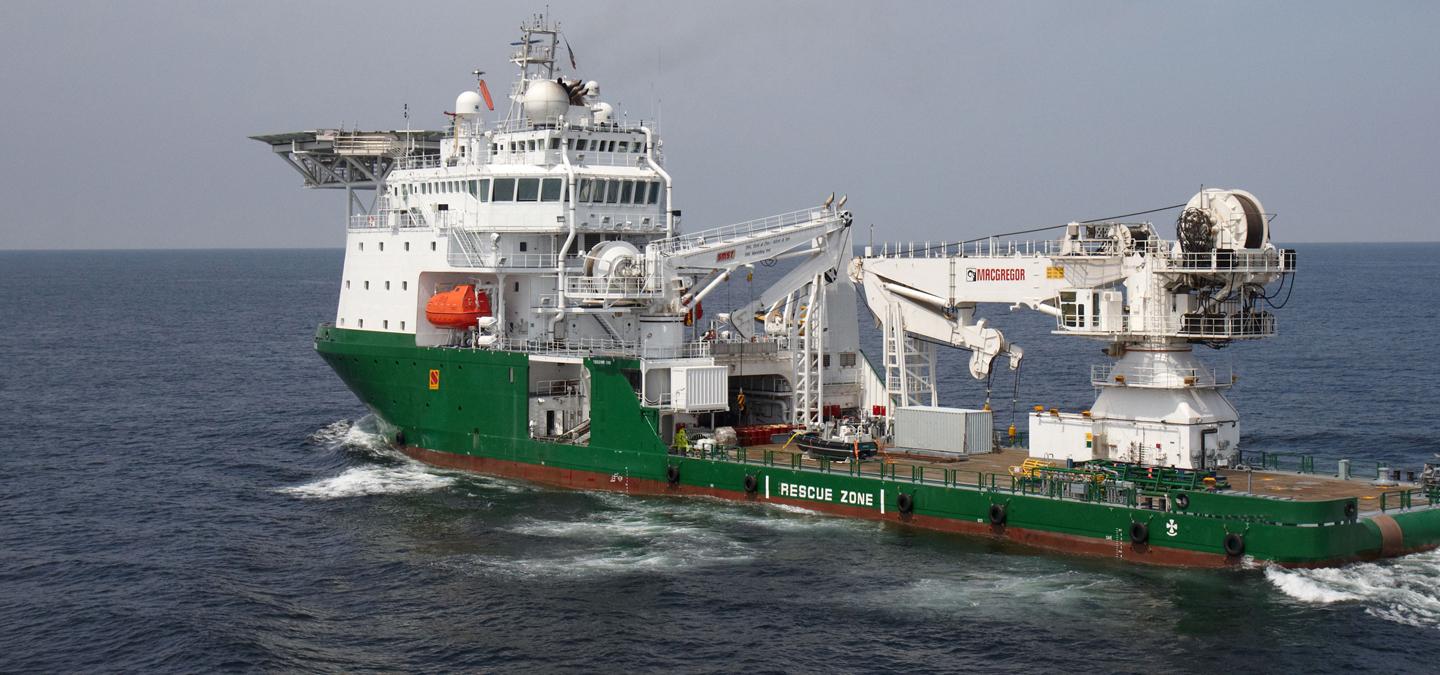
Cranes: essential equipment on Subsea vessels
Through their high-technology and lifting power, cranes are essential to the performance of the IMR vessels they equip. The BOURBON fleet of active heave compensation cranes, one of the largest on the market, is operated by a dedicated team.
Two types of cranes for various uses
The electro-hydraulic cranes outfitting the IMR vessels in the BOURBON fleet have a lifting capacity ranging from 12 t to 250 t. On the vessel, the less powerful crane is used for lowering or raising "small" parcels, baskets of tools... While the main crane is used to launch jumpers, "Xmas Trees" (wellheads). It can also be used to transfer parcels from one vessel to another, at sea. Both cranes are also used to transfer personnel in baskets.
Today, BOURBON owns and manages a significant fleet of Subsea cranes, with 31 units in operation. The vessels of the Bourbon Evolution series alone employ 20 of them. And there will be 40 in 2015!
Specialized, high performance cranes
The latest cranes are equipped with 2 articulating booms, allowing more versatility and safety:
- when the two booms are locked in, the crane has a tall hook height, with a significant lifting capacity in order to reach very high loads;
- the retracted boom can lift heavy and more compact loads with a maximum capacity with a limited hook height, to prevent swing (pendulum movement of the hook).
Others technical characteristics:
- the cable allows them to work at depths of up to 3000 m;
- they are equipped with an active heave compensation device, and a tension regulator to smoothly lift a load resting at the sea bottom;
- designed to function on a vessel at sea, they are equipped with powerful safety systems, and the safety factors take into account the accelerations related to the vessel's movements: roll, pitch, heave.
"An IMR vessel is characterized by three key elements: its propulsion/positioning system, its ROVs, and its cranes. The performance of the cranes IS the performance of the vessel: without them, an IMR vessel loses all its strengths."Joëlle LailletCranes newbuilds manager Subsea services
Constant technical evolution
The "latest generation" of cranes feature a more effective electronic system:
- they continuously maintain the hook height, during lifting on the deck, even when the boom angle varies;
- it records the life of the cable (load supported, depth, etc.).
BOURBON teams work closely with manufacturers to improve the design and functionality of the cranes.
Maintenance: constant, regular care
A BOURBON a team is fully dedicated to cranes to manage the fleet, plan maintenance and establish maintenance procedures, and monitor the cables. A second team, consisting of 'reserve' technicians, experienced hydraulic engineers, is responsible for troubleshooting, maintenance periods, commissioning new cranes, and inspections.
Just like for vessels, BOURBON is focusing on standardizing its fleet of cranes, in order to have a common inventory of replacement parts, both onboard the vessel and for maintenance periods.
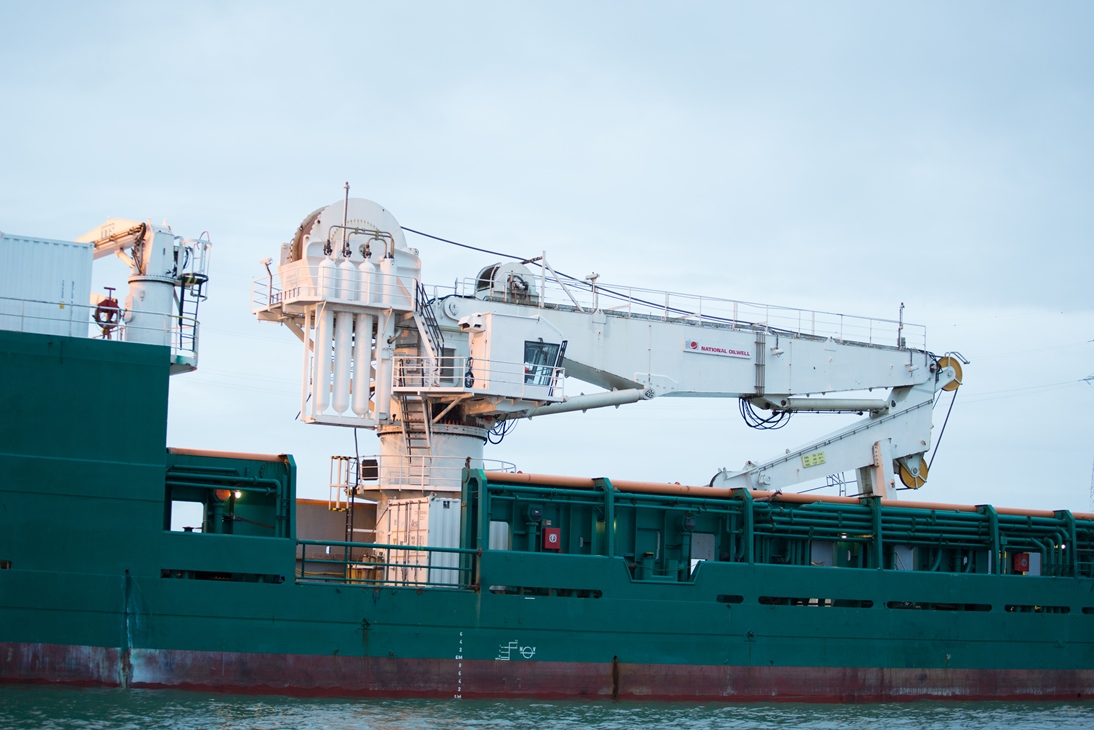
Cables are subject to specific procedures, involving:
- visual inspections;
- regular lubrication by the crew;
- annual rupture testing in the lab, using a sample taken from the cable;
- random magneto-inductive testing, to detect potential strand ruptures.
Cables are routinely replaced during maintenance periods, every 5 years.
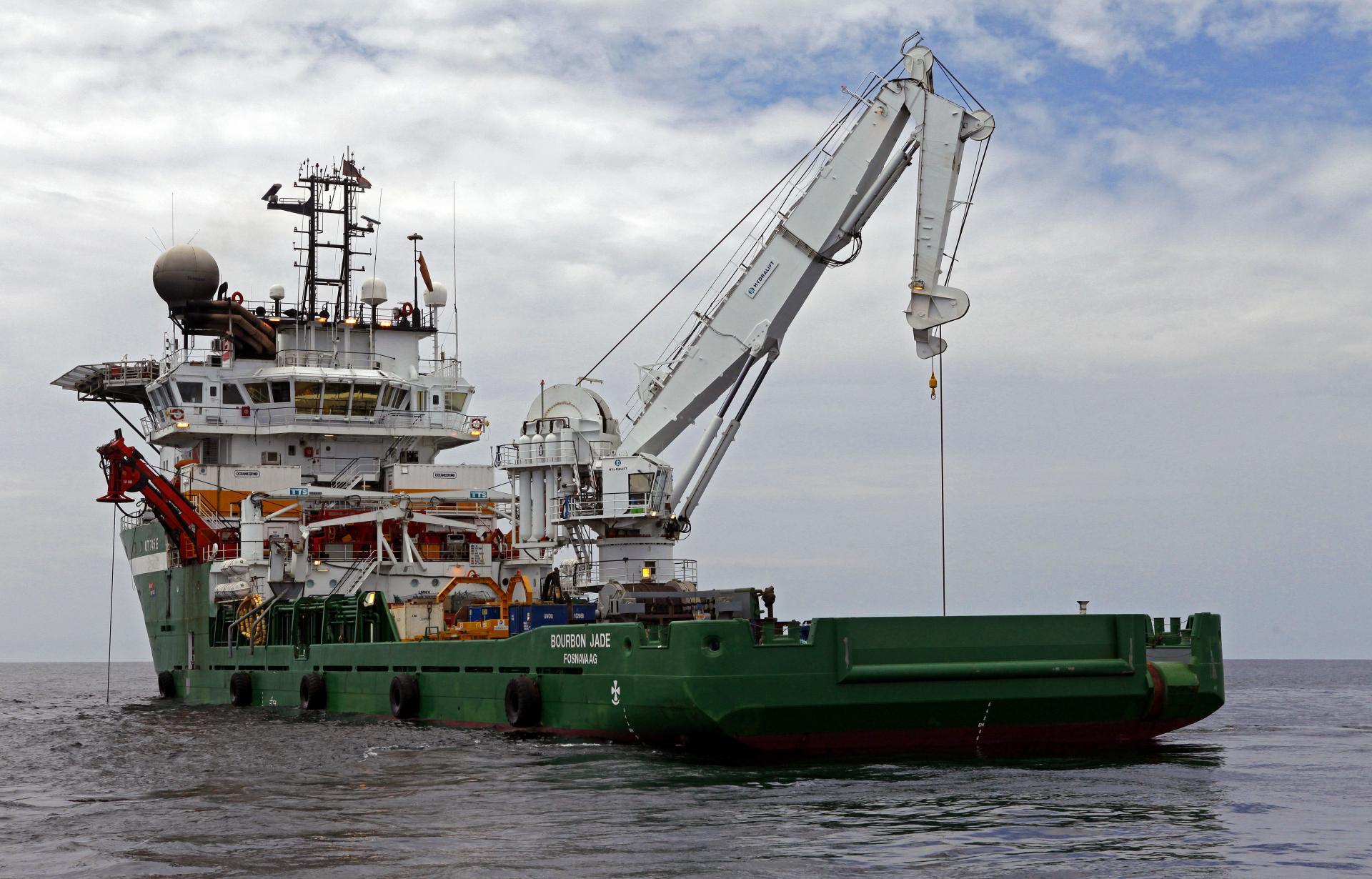
Bourbon Jade in lifting operation
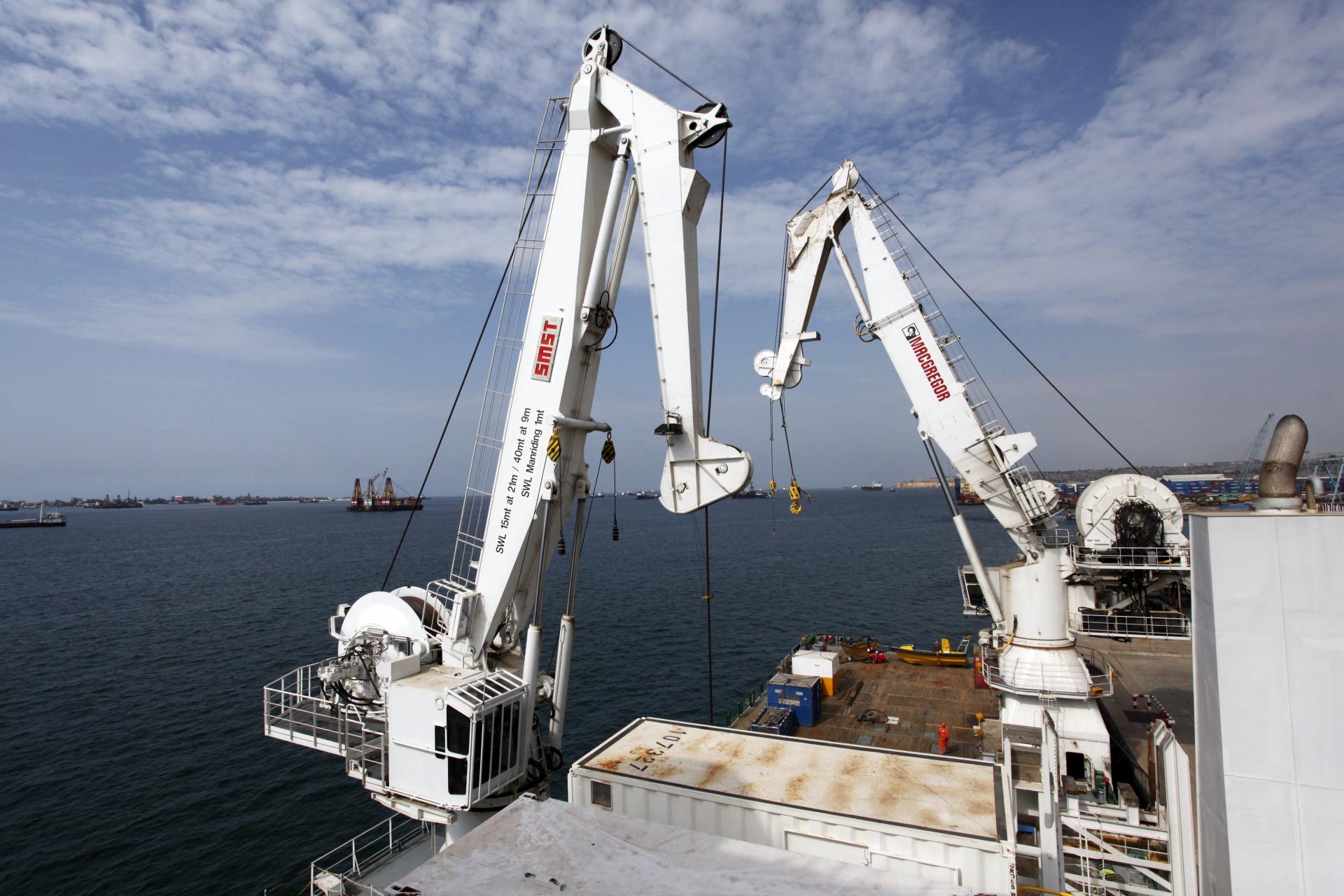
Cranes operations
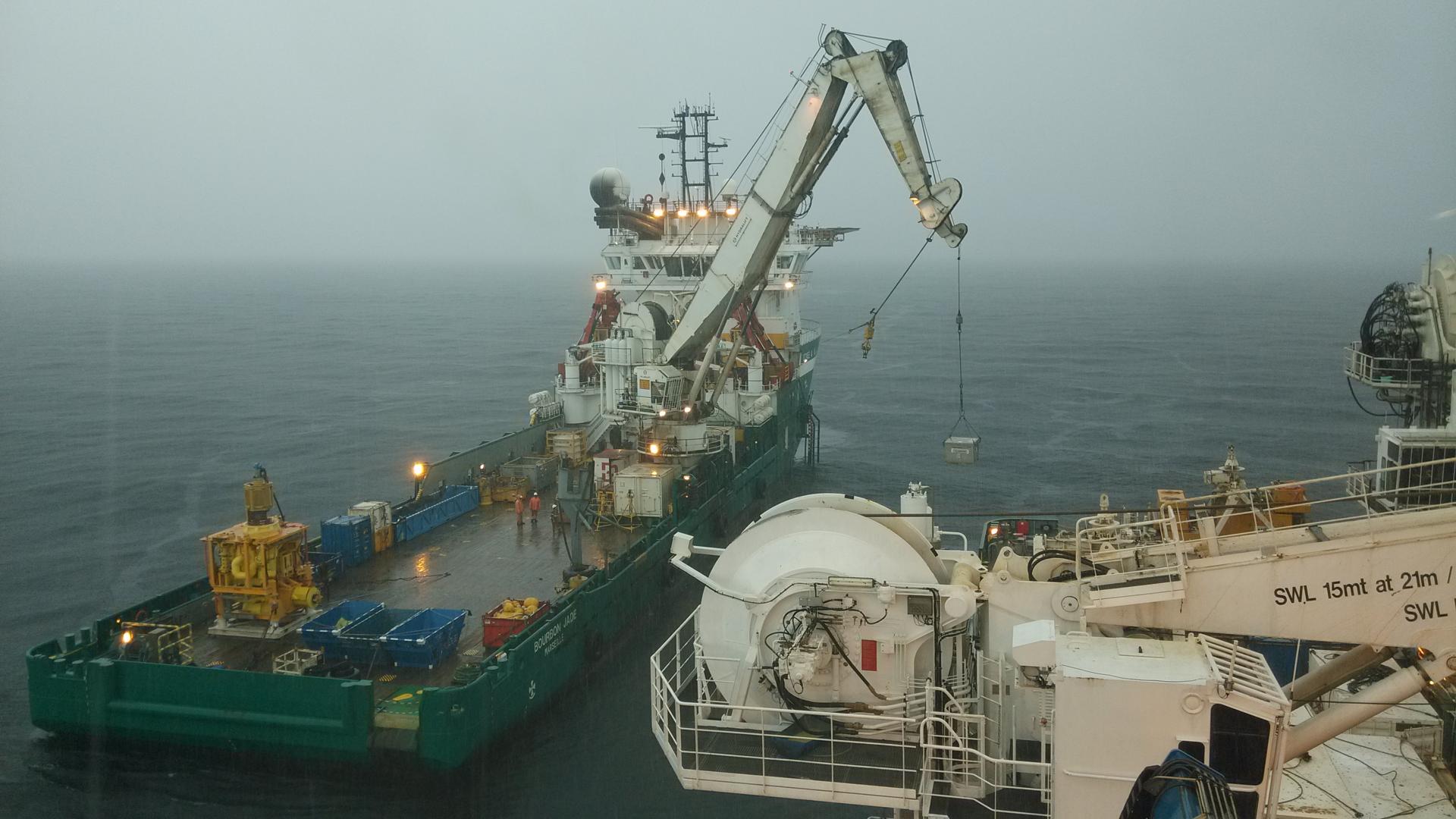
Bourbon Jade in lifting operation
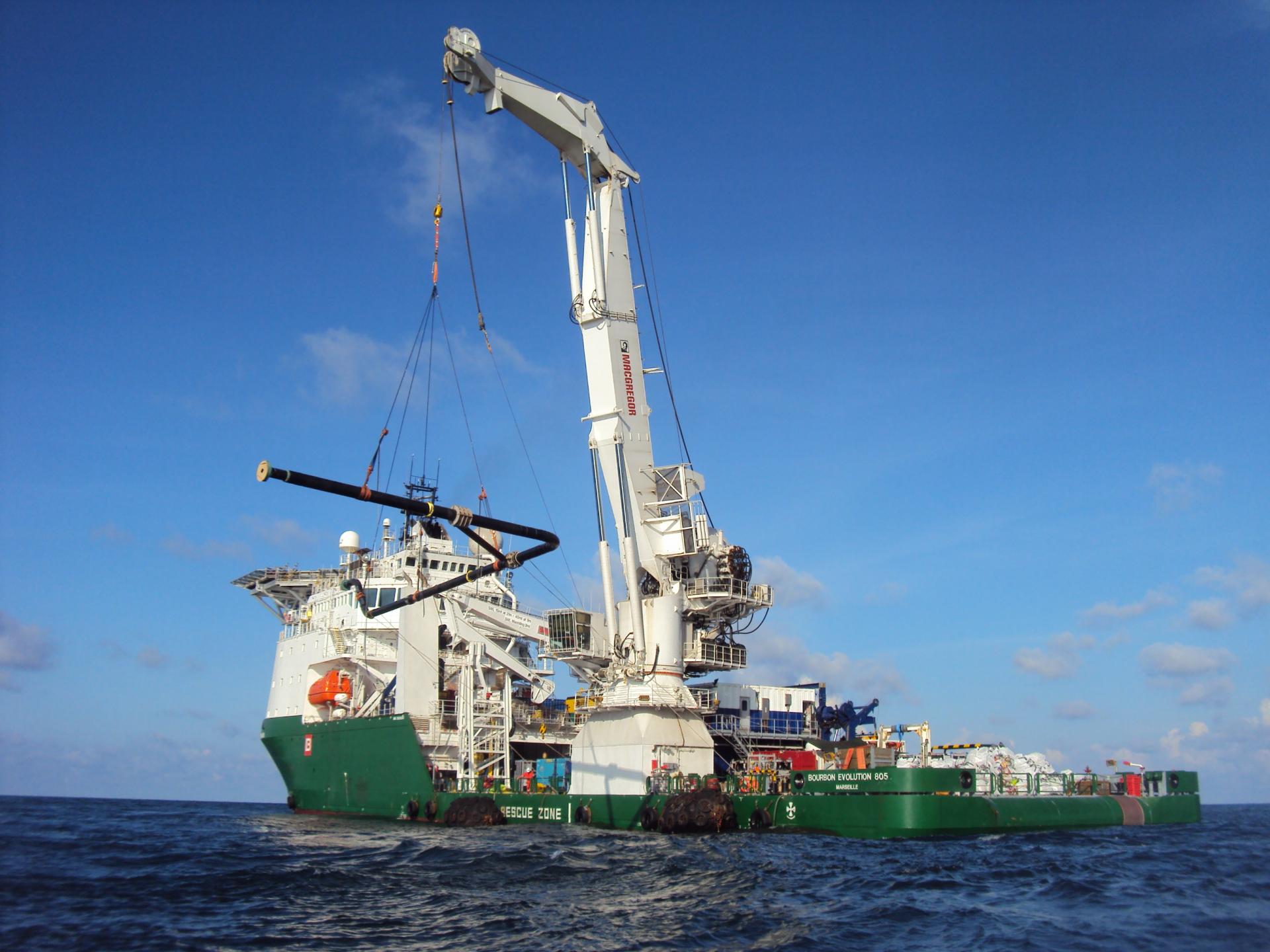
Bourbon Evolution 805 in lifting operation


